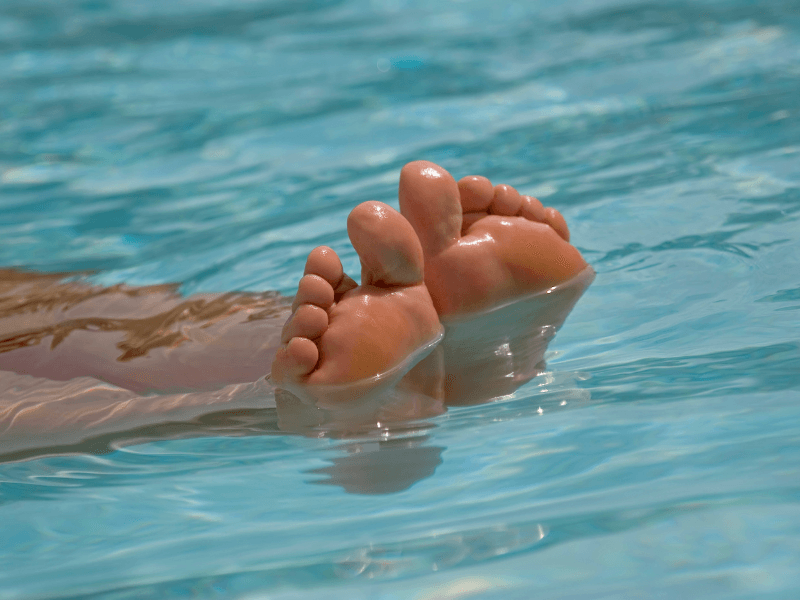Verruca needling is an innovative, impressive treatment for verrucae, the troublesome warts that grow on the bottom of people’s feet and often form clusters. Also called Falknor’s needling, this minor surgical procedure is one of several superb verruca treatments provided by our London podiatrists. However, verruca needling differs from the others in several significant ways. It offers a unique approach to eradicating verrucae, as we’ll explain.
Read on to discover how verruca needling works and why it’s often the best treatment for patients with multiple verrucae. If you’d like expert help to overcome a verruca infection, simply contact us today to request a consultation at our Canary Wharf E14 podiatry clinic or one of our other London foot clinics.
One Verruca Can Easily Multiply
People develop verrucae as a result of certain strains of the Human Papillomavirus (HPV) infecting cells in the skin’s top layer, which is known as the epidermis. An individual could well catch the virus if their bare feet are exposed to infected skin or contaminated surfaces/items. That’s why verruca infections spread widely in changing rooms, swimming pools and showers, and are particularly common in the summer.
Verrucae tend to appear on the ball of the foot, heel or underside of the toes. That’s because those areas make the most contact with the ground when you’re standing or in motion. Verrucae are rough, firm, yellowish warts containing black specks of clotted blood. They look like mini cauliflowers, as the Royal College of Podiatry notes, and can be a source of embarrassment.
Because verrucae tend to be itchy, painful and annoying, sufferers often scratch, rub and pick at them. Unfortunately, this only helps the virus to spread further across their feet, compounding the problem. One verruca can soon turn into two, three, four, etc. Clusters are called mosaic warts.
If you ignore verrucae, they may linger for years. So it’s sensible to take a proactive approach to this foot problem instead by obtaining London verruca treatment from our skilled team. Strong acid-based solutions, cryotherapy and Swift microwave energy excel at destroying infected cells. Verruca needling is often chosen for complex or persistent cases, but it’s also suitable for other types of verruca infections. In many cases, treating just the largest verruca is enough to trigger an immune response that helps clear the others.
How Verruca Needling Works
Verruca needling was developed in the 1960s by an American podiatrist, Gordon Falknor, and has been widely adopted by foot health specialists. The NHS remarks that it ‘has been found to be a safe and effective treatment’.
Because the verruca virus dwells near the skin’s surface, it can easily go undetected by the body’s immune system. The ingenious idea behind verruca needling is to resolve that problem by calling attention to the virus. A needle repeatedly punctures the patient’s worst verruca, forcing virus particles into the fatty tissue beneath the epidermis, where it’s confronted by immune system-regulating cells. This triggers a powerful immune response, with the immune system fighting and overcoming the verruca infection.
What Makes Verruca Needling Unique
There are several reasons why verruca needling is unlike other verruca treatments:
- Usually, only one or two treatment sessions are required instead of several. 68% of patients in a recent clinical study found a single verruca needling session was enough to completely resolve the problem.
- Depending on the presentation, verruca needling can target just one verruca or multiple sites. This flexible approach makes it a convenient option for many patients, including busy London professionals.
- The effects of verruca needling are widespread rather than localised, which is hugely beneficial when you have multiple verrucae. The treatment can even get rid of warts that are due to the verruca virus having spread to other areas, such as the fingers.
The Verruca Needling Procedure Explained
A London verruca needling session takes about an hour and includes the following key steps:
- The podiatrist injects a local anaesthetic into your foot to ensure the procedure is painless.
- They puncture the whole surface of your main verruca with a fine, dry, sterile needle. The verruca bleeds a little – this is a sign that the virus particles have been pushed down deep enough.
- The podiatrist applies a small dressing to the area, and a scab will soon form. You’ll redress the area daily for several days and attend two follow-up appointments. There’s a strong chance that you’ll be verruca-free in a few months or less.
London Verruca Needling to Eliminate Stubborn Verrucae
If you have a persistent verruca cluster, our specialist London verruca needling could be exactly what you need to overcome the problem.
For effective verruca treatment services, including verruca needling, book an appointment with Feet By Pody today.

